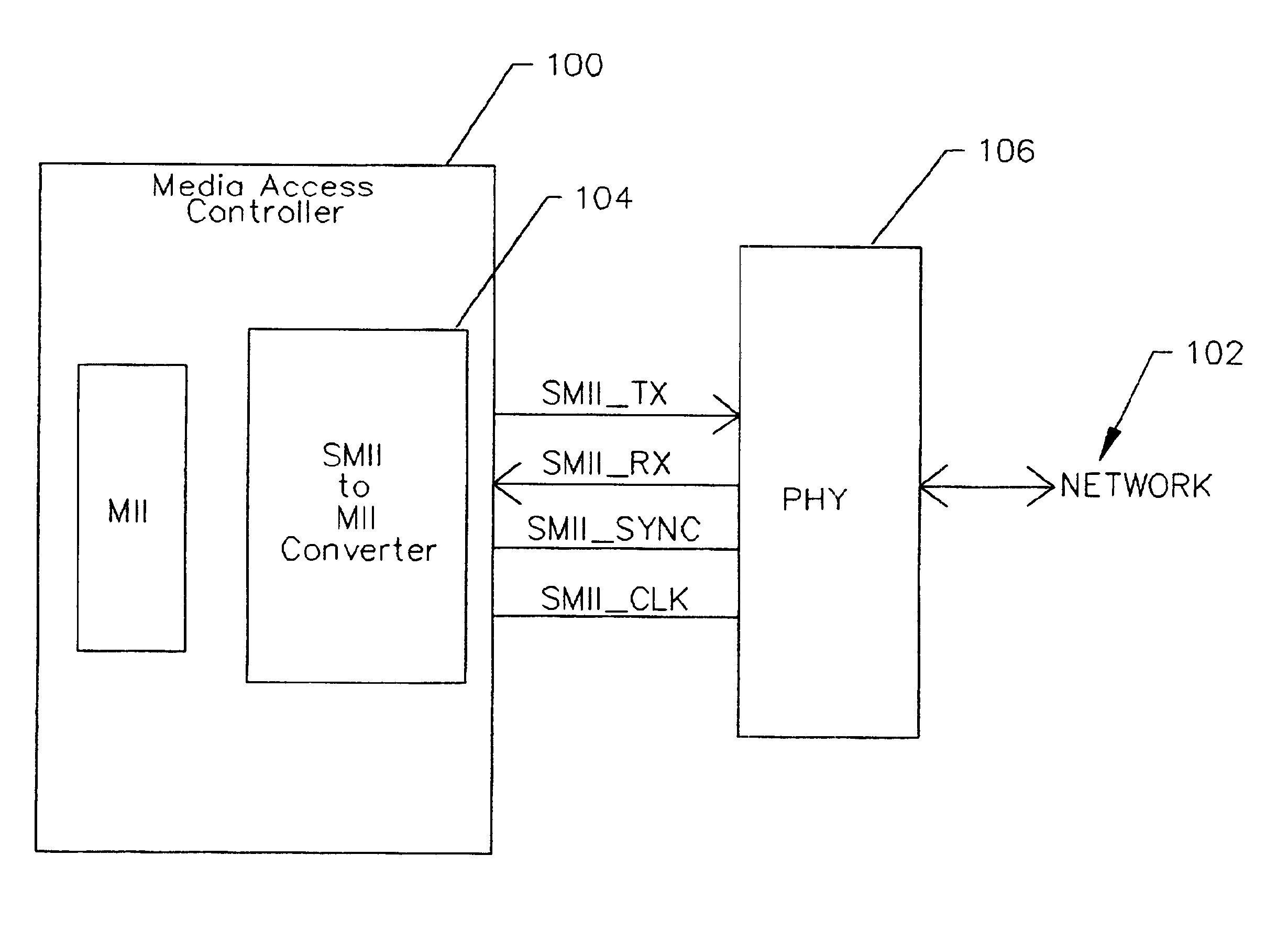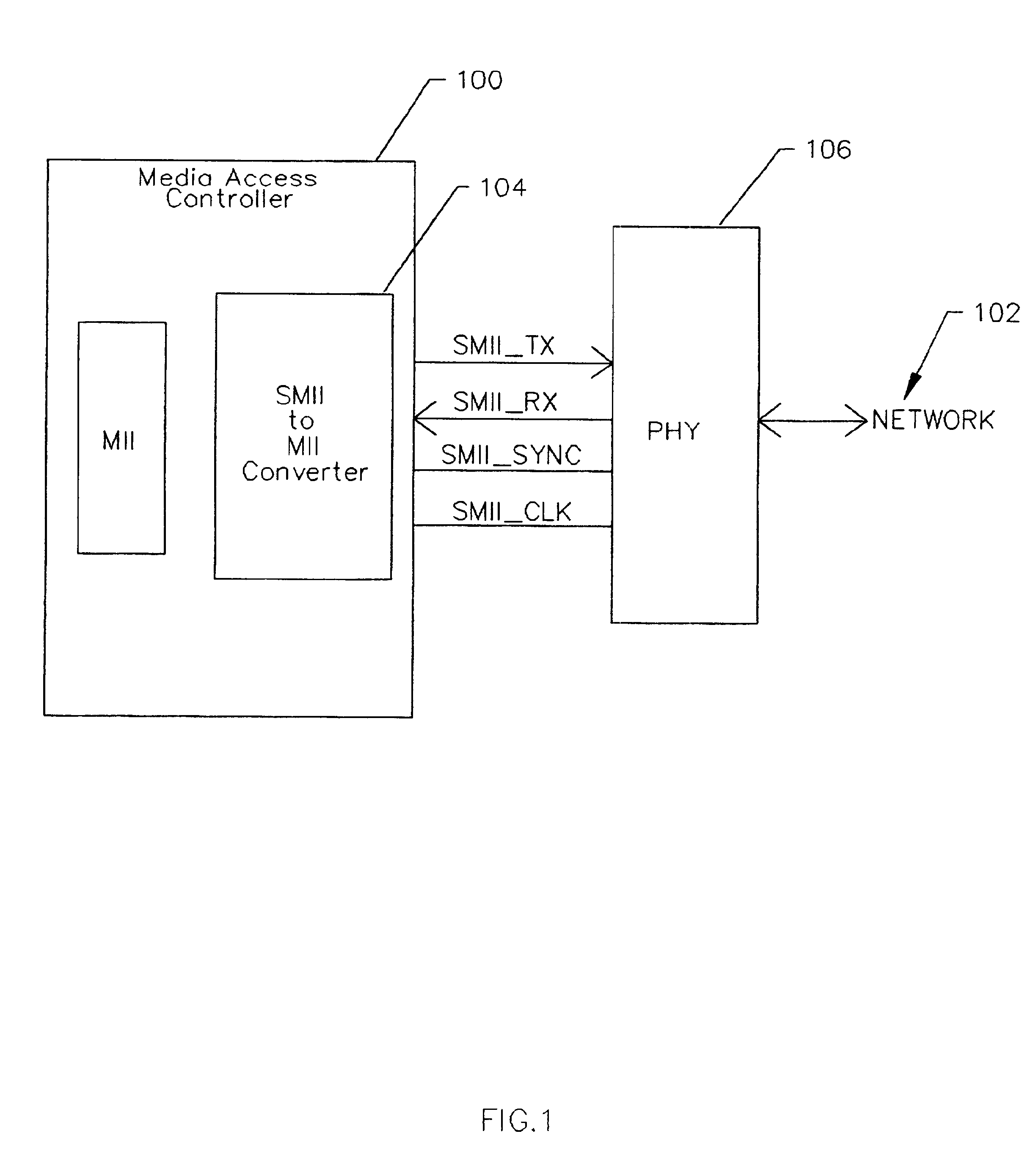Minimal latency serial media independent interface to media independent interface converter
a technology of independent interface and converter, which is applied in the field of networked computer systems, can solve the problems of networked technology, limiting the bandwidth of the system, and affecting the speed of the network, so as to reduce the latency of the conversion
- Summary
- Abstract
- Description
- Claims
- Application Information
AI Technical Summary
Benefits of technology
Problems solved by technology
Method used
Image
Examples
Embodiment Construction
d to as a receive MII driver. This stage generates the MII receive outputs from the output of the receive output generator of FIG. 7. In 100BaseX mode, MII outputs are generated at cycle 4 and 9 of the SMII frame so that they may be sampled on the positive edge. In 10BaseX mode, the positive edge occurs once in every 5 SMII frames.
[0052]The above-listed sections and included information are not exhaustive and are only exemplary for network systems having a PHY with an MII in the corresponding MAC. The particular sections and included information in a particular embodiment may depend upon the particular implementation and the included devices and resources. Although a system and method according to the present invention has been described in connection with the preferred embodiment, it is not intended to be limited to the specific form set forth herein, but on the contrary, it is intended to cover such alternatives, modifications, and equivalents, as can be reasonably included within...
PUM
 Login to View More
Login to View More Abstract
Description
Claims
Application Information
 Login to View More
Login to View More - R&D
- Intellectual Property
- Life Sciences
- Materials
- Tech Scout
- Unparalleled Data Quality
- Higher Quality Content
- 60% Fewer Hallucinations
Browse by: Latest US Patents, China's latest patents, Technical Efficacy Thesaurus, Application Domain, Technology Topic, Popular Technical Reports.
© 2025 PatSnap. All rights reserved.Legal|Privacy policy|Modern Slavery Act Transparency Statement|Sitemap|About US| Contact US: help@patsnap.com



